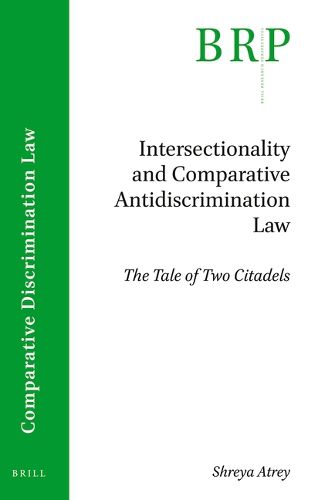Readings Newsletter
Become a Readings Member to make your shopping experience even easier.
Sign in or sign up for free!
You’re not far away from qualifying for FREE standard shipping within Australia
You’ve qualified for FREE standard shipping within Australia
The cart is loading…






This volume in the Brill Research Perspectives in Comparative Discrimination Law addresses intersectionality from the lens of comparative antidiscrimination law. The term ‘intersectionality’ was coined by Kimberle Williams Crenshaw in 1989. As a field, intersectionality has a longer history, of nearly two hundred years. Meanwhile, comparative antidiscrimination law as a field may be just over a few decades old. Thus, intersectionality’s tryst with antidiscrimination law is a fairly recent one. Developed as a critique of antidiscrimination law, intersectionality has had a significant influence on it. Yet, intersectionality’s logic does not seem to have infiltrated the logic of antidiscrimination law completely. Comparative antidiscrimination law continues to develop with intersectionality in sight, but rarely, in step. On the occasion of the 30th anniversary of Crenshaw’s seminal article that coined the term in the context of antidiscrimination law, Shreya Atrey explores this irony. Her article provides a meta-narrative of the development of the two fields with the purpose of showing what appear to be orthogonal trajectories.
$9.00 standard shipping within Australia
FREE standard shipping within Australia for orders over $100.00
Express & International shipping calculated at checkout
This volume in the Brill Research Perspectives in Comparative Discrimination Law addresses intersectionality from the lens of comparative antidiscrimination law. The term ‘intersectionality’ was coined by Kimberle Williams Crenshaw in 1989. As a field, intersectionality has a longer history, of nearly two hundred years. Meanwhile, comparative antidiscrimination law as a field may be just over a few decades old. Thus, intersectionality’s tryst with antidiscrimination law is a fairly recent one. Developed as a critique of antidiscrimination law, intersectionality has had a significant influence on it. Yet, intersectionality’s logic does not seem to have infiltrated the logic of antidiscrimination law completely. Comparative antidiscrimination law continues to develop with intersectionality in sight, but rarely, in step. On the occasion of the 30th anniversary of Crenshaw’s seminal article that coined the term in the context of antidiscrimination law, Shreya Atrey explores this irony. Her article provides a meta-narrative of the development of the two fields with the purpose of showing what appear to be orthogonal trajectories.